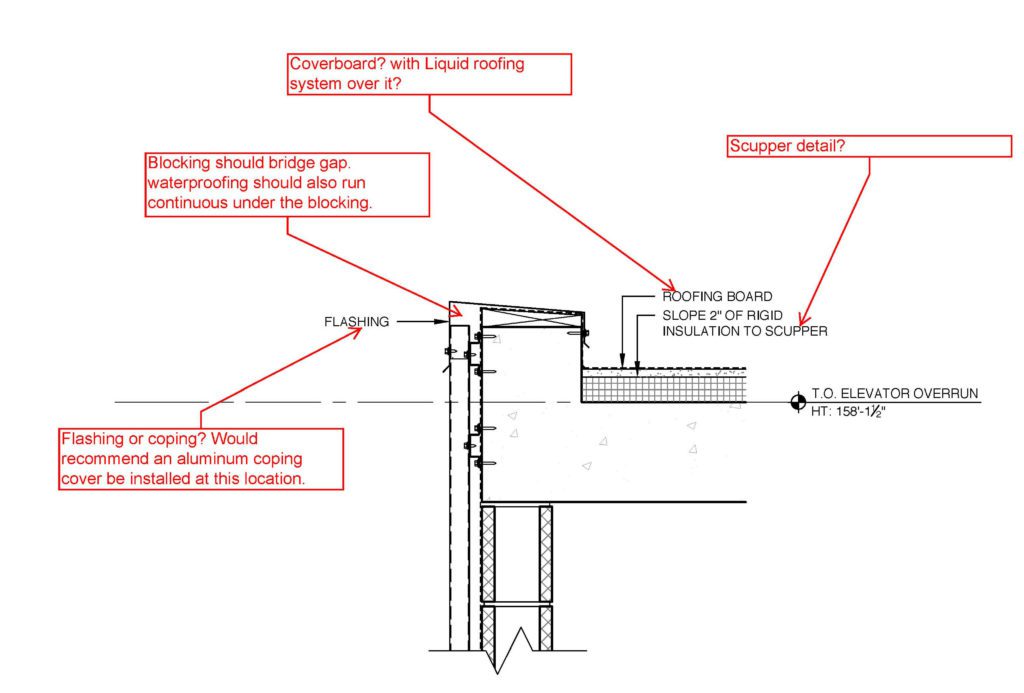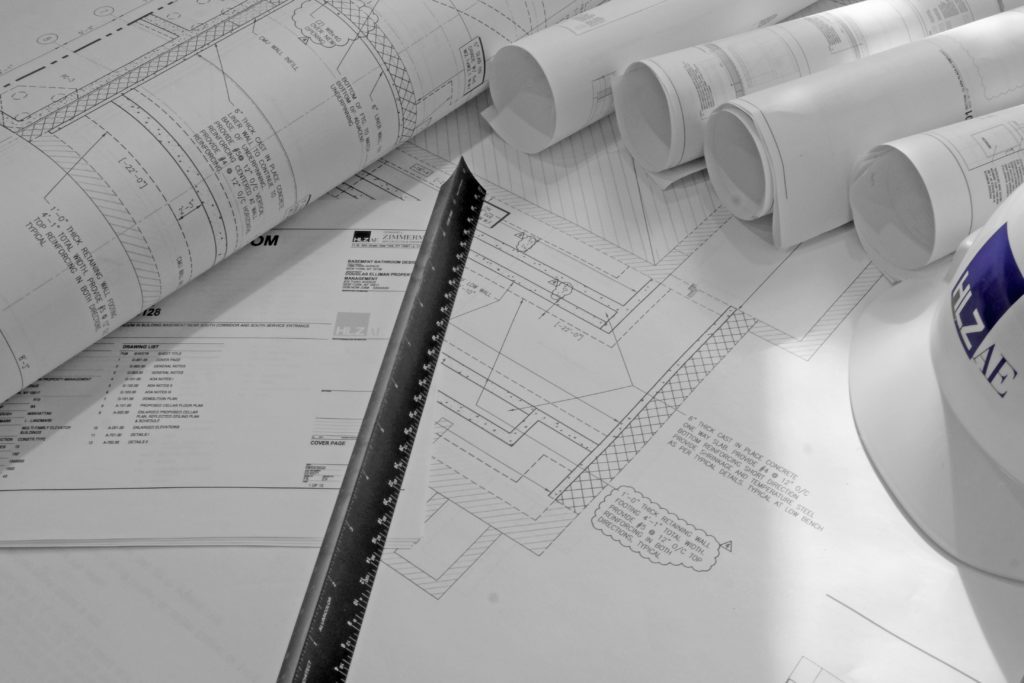Peer Review: We’ve Got Your Back!
February 14, 2024
by Joe Nevins
With the global investment economy that often fuels architectural design and the ever growing concern for liability, a review of the technology and building details of a project is often a sound investment, especially on the back end when the project is being sold or passed to the next generation.
At HLZAE, we are often contacted concerning the review of a set of drawings for a new building. Savvy owners have come to realize that firms that specialize in building envelope analysis, repair, and restoration can be quite useful when a new project is being worked up, because they can leverage the cumulative knowledge of the firm’s experience concerning the failure of materials and techniques.

Science tells us that water is the universal solvent, given enough time. From raw experience looking at structures ranging from the 1670’s to the 2000’s we are well aware of the issues that water infiltration brings. Resolving the forces and effects of wind, rain, the ever-present freeze/thaw cycle of the seasons, and the expansion/contraction issues typical to materials, is a challenge in the best of circumstances. Given the time pressure of modern construction coupled with regulatory requirements adds a different layer of complexity.
The layperson sees a building in the light of day, notices the overall geometry and might appreciate some details the design architect created to endow the built environment with yet another gem for admiration. Those involved with construction see with a different set of eyes – they see the different systems all acting together to project the design intent. Those involved with building envelopes see things with yet another set of eyes – we specialize in how all these different features must play well together for the building to withstand weather and time; sheer perseverance to the indignities inflicted by the natural environment is what we seek and admire. Part of the fascination we have with the built fabric that surrounds us is that as technology advanced in the past, so did the design treatments for waterproofing a building. The most elegant methods we have seen are those that recognize that water is something to be managed and directed, not something that’s existence is denied. With even the latest curtain wall design, the quality solution is that which keeps the water outside the building envelope- and yet also provides a way for pressure to be balanced, and for moisture that does infiltrate to be drained away in a passive manner, unknown to the building occupants.

A simple thing really- until one considers the divergent parties at play in both the design and construction of a project. The developer wants a certain quality building for a certain price point. The design architect is designing for his client, for his own aesthetic and for the public. The contractor wants to get the building in the ground and finished quickly and economically. All those subcontractors want to get their portion done the same way. The coordination for construction is complex, let alone quality assurances. Should a flaw be found in the contract documents, it has to be resolved quickly and often with what is on hand; there is no time for the crew to be twiddling their thumbs.
When it happens – when suddenly the architect, the developer and the contractor are scratching their heads at some issue on the site because of a condition no one anticipated- that is typically the time where smaller issues are resolved with a brief conversation, while larger issues often start a finger pointing exercise. As if it was a cartoon, one can imagine thought clouds over their heads: “I pay these folks enough money, why didn’t they catch this?” “Hmm, should have redlined this myself before we even put it out to bid.” “Why do I always have to solve these guys’ problems?” Broadly speaking, we have all been there at some point, where 20/20 hindsight makes everything clear.
This is the moment that peer review is made for. With all the different disciplines that work on designing the building components, the most successful construction jobs are based on clear communication, cooperation and coordination. A third party reviewer can sit down and review the project- commenting on what will work together, and pointing out the places where the team has to look at things with a deeper intent. It might be something as simple as tweaking a caulking detail to provide a secondary drainage plane; one project comes to mind where there was no way to actually access the bolts shown fastening the curtain wall to the building frame- and this was caught during the review. We all want the project to succeed and we know it’s knowledge, experience and teamwork that gets the best projects built. Peer Review is a strategy, a form of insurance, that puts eyes on the project at the right time and in the right place.
Recommended Articles
Sorry, we couldn't find any posts. Please try a different search.